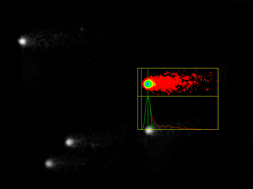Monocyte Death: Macrophages, Neutrophils & Killing in Trans
- Details
- Created: Tuesday, 07 March 2017 14:53
Monocytes and their descendants, macrophages, play a key role in the defense against pathogens. They also contribute to the pathogenesis of inflammatory diseases.
In previous studies, researchers at the Department of Toxicology, University Medical Center, Mainz, Germany have shown that monocytes are impaired in DNA repair, rendering them vulnerable to genotoxic stress while monocyte-derived macrophages are DNA repair competent and genotoxic stress-resistant. For full background information relating to this investigation, please refer to the original publication.
 The group hypothesized that monocytes can be selectively killed by reactive oxygen species (ROS) produced by activated macrophages. They also wished to know whether monocytes and macrophages are protected against their own ROS produced following activation.
The group hypothesized that monocytes can be selectively killed by reactive oxygen species (ROS) produced by activated macrophages. They also wished to know whether monocytes and macrophages are protected against their own ROS produced following activation.
During the investigation, they studied the effect of the ROS burst on DNA integrity, cell death and differentiation potential of monocytes. Respiratory burst (sometimes called oxidative burst) is the rapid release of reactive oxygen species (superoxide radical and hydrogen peroxide) from different types of cells.
Full experimental details can be found in the original publication, including how the scientists detected extracellular and intracellular ROS, co-cultured monocytes with macrophages or granulocytes, and immunofluorescence techniques.
Oxidative DNA damage was measured by the formamidopyrimidine DNA glycosylase (FPG)-modified alkaline Comet Assay. A brief overview of the comet assay method is described below, but for full experimental details, please refer to the original publication.
• Briefly, monocytes were co-cultured with PMA-activated (PMA = Phorbol 12-myristate 13-acetate) macrophages or co-treated with PMA.
• Monocytes were harvested, embedded in 0.5% low melting point agarose and transferred onto agarose-pre-coated slides.
• The slides were incubated in lysis buffer.
• The slides were equilibrated 2 x 5 min in buffer F at room temperature.
• FPG was diluted in buffer F and was added to the slides and incubated in a humid chamber.
• DNA unwound in electrophoresis buffer, before electrophoresis was performed.
• The slides were washed three times in neutralisation buffer.
• The samples were fixed in ethanol, air-dried and stained with propidium iodide.
• Comets were analysed by fluorescence microscopy using an Olympus BX50 equipped with a ColorView camera. At least 100 cells were scored in each experiment using Comet Assay IV software (Perceptive Instruments Ltd., Bury St Edmunds, UK).
 In this investigation, the researchers showed that monocytes, but not macrophages, stimulated for ROS production by PMA undergo apoptosis, despite similar levels of initial DNA damage.
In this investigation, the researchers showed that monocytes, but not macrophages, stimulated for ROS production by PMA undergo apoptosis, despite similar levels of initial DNA damage.
They also showed that following co-cultivation with ROS producing macrophages, monocytes displayed oxidative DNA damage, accumulating DNA single-strand breaks and a high incidence of apoptosis, reducing their ability to give rise to new macrophages.
Killing of monocytes by activated macrophages, termed “killing in trans”, was abolished by ROS scavenging and was also observed in monocytes co-cultivated with ROS producing activated granulocytes.
The investigators concluded that these data revealed that monocytes, which are impaired in the repair of oxidised DNA lesions, are vulnerable to their own ROS and ROS produced by macrophages and granulocytes and support the hypothesis that this is a mechanism regulating the amount of monocytes and macrophages in a ROS-enriched inflammatory environment.
Article Source:
Death of Monocytes through Oxidative Burst of Macrophages and Neutrophils: Killing in Trans Ponath V, Kaina B (2017) PLOS ONE 12(1): e0170347.
